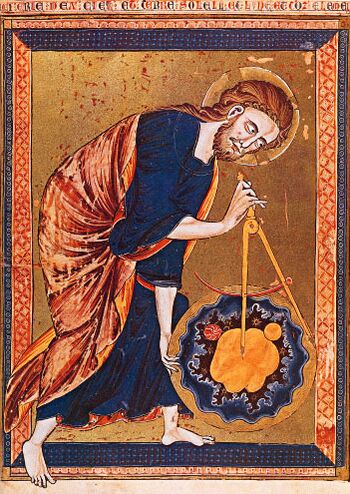
FAIR is a non-profit organization dedicated to providing well-documented answers to criticisms of the doctrine, practice, and history of The Church of Jesus Christ of Latter-day Saints.
m (Robô: A modificar es:El Libro de Mormón/Anacronismos/Brújula para es:El Libro de Mormón/Brújula) |
m (Robô: A modificar en:Book of Mormon/Anachronisms/Compass para en:Book of Mormon/Compass) |
||
| Linha 16: | Linha 16: | ||
[[de:Das Buch Mormon/Anachronismen/Kompass]] | [[de:Das Buch Mormon/Anachronismen/Kompass]] | ||
[[en:Book of Mormon | [[en:Book of Mormon/Compass]] | ||
[[es:El Libro de Mormón/Brújula]] | [[es:El Libro de Mormón/Brújula]] | ||
It is claimed that the description of the Liahona as a "compass" is anachronistic because the magnetic compass was not known in 600 B.C. One critical website notes that "the COMPASS which DIRECTED one's course wasn't invented yet for many centuries." [1]
To use the word compass as a name for a round or curved object is well attested in both the King James Version of the Bible and the Oxford English Dictionary. The Book of Mormon refers to the Liahona as "a compass" not because it anachronistically pointed the way to travel, but because it was a perfectly round object.
1 Nephi 16:10, 30
10 And it came to pass that as my father arose in the morning, and went forth to the tent door, to his great astonishment he beheld upon the ground a round ball of curious workmanship; and it was of fine brass. And within the ball were two spindles; and the one pointed the way whither we should go into the wilderness.
30 And it came to pass that I, Nephi, did go forth up into the top of the mountain, according to the directions which were given upon the ball.
This object did give directions, however this object was referred as "a compass" because it was a perfectly round object.
The fact that the Liahona is referred to as a "compass" and that it contained spindles leads one to assume that it was used like a modern compass. However, there is no indication that either of the spindles pointed to magnetic north. If one of the spindles was used to provide directional information, the inference is that it simply pointed the direction that they were to go, which would not be magnetic north.
As Nephi put it, the "directions which were given upon the ball":
29 And there was also written upon them a new writing, which was plain to be read, which did give us understanding concerning the ways of the Lord; and it was written and changed from time to time, according to the faith and diligence which we gave unto it. And thus we see that by small means the Lord can bring about great things.
30 And it came to pass that I, Nephi, did go forth up into the top of the mountain, according to the directions which were given upon the ball. 1 Nephi 16:29-30 (emphasis added)

...I have somewhat to say concerning the thing which our fathers call a ball, or director — or our fathers called it Liahona, which is, being interpreted, a compass; and the Lord prepared it (Alma 37:38).[2]
In every case, it is clear that, at least in Jacobean England, the word was regularly treated as meaning either a round object, or something which moved in a curved fashion. The Book of Mormon text uses a form of Jacobean English--and does not contain expressions that were introduced after 1700. This has implications for how we read the text. The critic treats something important as insignificant.
Further evidence of the archaic meaning of the word comes from a study of the rather lengthy listing for the word in the Oxford English Dictionary. It includes definition 5.b.:
Naturally-occurring magnetic ore was being mined by the 7th century B.C., and its magnetic properties were first discussed by the early philosopher Thales of Miletos around 600 B.C.[4]
Non-LDS astronomer John Carlson reported finding a Olmec hematite artifact in Mesoamerica, which was radio-dated to 1600 to 1000 B.C. If Carlson is right, this usage "predates the Chinese discovery of the geomagnetic lodestone compass by more than a millennium."[5] Other researchers have suggested the metal is simply part of an ornament,[6] though Mesoamericanist Michael Coe has suggested the use of such ores as floating compasses.[7] Such examples demonstrate how a single find can radically alter what archaeology tells us is "impossible" with regard to the Book of Mormon text.
As Robert F. Smith observed:
it is worth noting that the function of magnetic hematite was well understood in both the Old and New Worlds before Lehi left Jerusalem. Magnetite, or lodestone, is, of course, naturally magnetic iron (Fe3O4), and the word magnetite comes from the name of a place in which it was mined in Asia Minor by at least the seventh century B.C., namely Magnesia.[a] Parenthetically, Professor Michael Coe of Yale University, a top authority on ancient Mesoamerica, has suggested that the Olmecs of Veracruz, Mexico, were using magnetite compasses already in the second millennium B.C. This is based on Coe's discovery during excavations at San Lorenzo-Tenochtitlán of a magnetite "pointer" which appeared to have been "machined," and which Coe placed on a cork mat in a bowl of water in a successful test of its function as a true floater-compass.[b] The Olmecs (Jaredites?) of San Lorenzo and their relatives in the Oaxaca Valley were utilizing natural iron ore outcroppings by the Early Formative period (c. 1475-1125 B.C.), and at the end of the San Lorenzo phase and in the Nacaste phase (c. 1200-840 B.C.). Mirrors and other items were also fashioned from this native magnetite (and ilmenite).[8]

FAIR is a non-profit organization dedicated to providing well-documented answers to criticisms of the doctrine, practice, and history of The Church of Jesus Christ of Latter-day Saints.
We are a volunteer organization. We invite you to give back.
Donate Now